Danny Abraham
DotHash: Estimating Set Similarity Metrics for Link Prediction and Document Deduplication
May 27, 2023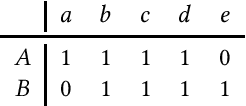
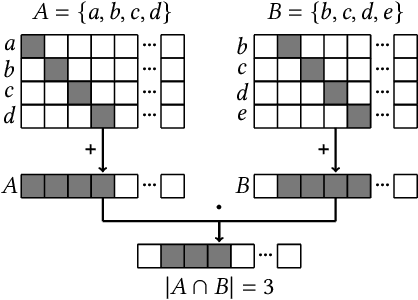
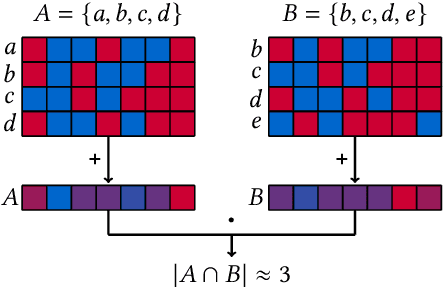
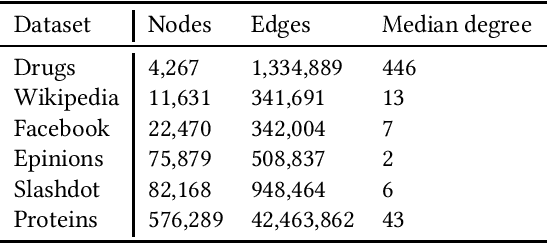
Abstract:Metrics for set similarity are a core aspect of several data mining tasks. To remove duplicate results in a Web search, for example, a common approach looks at the Jaccard index between all pairs of pages. In social network analysis, a much-celebrated metric is the Adamic-Adar index, widely used to compare node neighborhood sets in the important problem of predicting links. However, with the increasing amount of data to be processed, calculating the exact similarity between all pairs can be intractable. The challenge of working at this scale has motivated research into efficient estimators for set similarity metrics. The two most popular estimators, MinHash and SimHash, are indeed used in applications such as document deduplication and recommender systems where large volumes of data need to be processed. Given the importance of these tasks, the demand for advancing estimators is evident. We propose DotHash, an unbiased estimator for the intersection size of two sets. DotHash can be used to estimate the Jaccard index and, to the best of our knowledge, is the first method that can also estimate the Adamic-Adar index and a family of related metrics. We formally define this family of metrics, provide theoretical bounds on the probability of estimate errors, and analyze its empirical performance. Our experimental results indicate that DotHash is more accurate than the other estimators in link prediction and detecting duplicate documents with the same complexity and similar comparison time.
QHD: A brain-inspired hyperdimensional reinforcement learning algorithm
May 14, 2022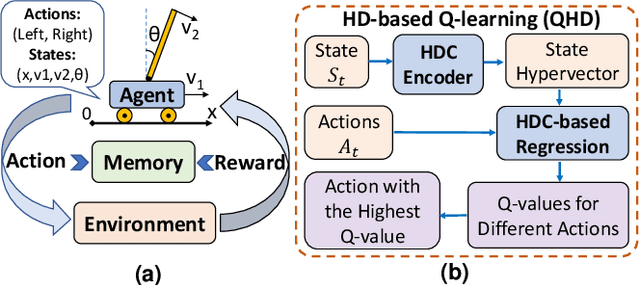
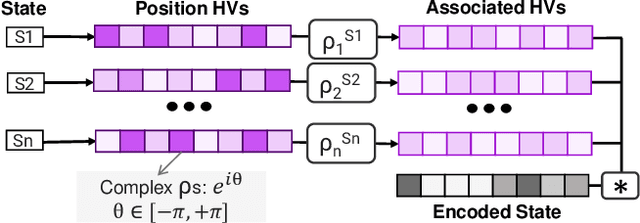

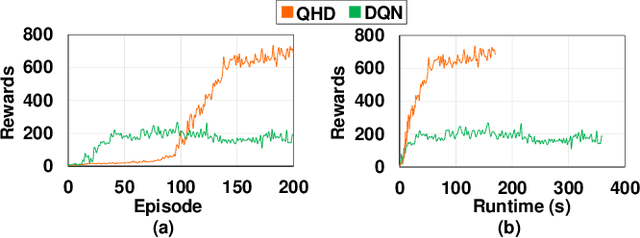
Abstract:Reinforcement Learning (RL) has opened up new opportunities to solve a wide range of complex decision-making tasks. However, modern RL algorithms, e.g., Deep Q-Learning, are based on deep neural networks, putting high computational costs when running on edge devices. In this paper, we propose QHD, a Hyperdimensional Reinforcement Learning, that mimics brain properties toward robust and real-time learning. QHD relies on a lightweight brain-inspired model to learn an optimal policy in an unknown environment. We first develop a novel mathematical foundation and encoding module that maps state-action space into high-dimensional space. We accordingly develop a hyperdimensional regression model to approximate the Q-value function. The QHD-powered agent makes decisions by comparing Q-values of each possible action. We evaluate the effect of the different RL training batch sizes and local memory capacity on the QHD quality of learning. Our QHD is also capable of online learning with tiny local memory capacity, which can be as small as the training batch size. QHD provides real-time learning by further decreasing the memory capacity and the batch size. This makes QHD suitable for highly-efficient reinforcement learning in the edge environment, where it is crucial to support online and real-time learning. Our solution also supports a small experience replay batch size that provides 12.3 times speedup compared to DQN while ensuring minimal quality loss. Our evaluation shows QHD capability for real-time learning, providing 34.6 times speedup and significantly better quality of learning than state-of-the-art deep RL algorithms.
 Add to Chrome
Add to Chrome Add to Firefox
Add to Firefox Add to Edge
Add to Edge